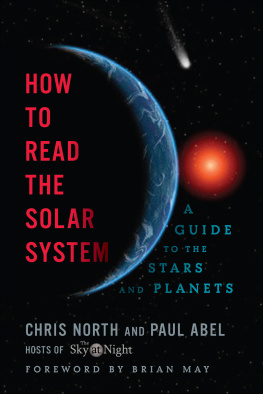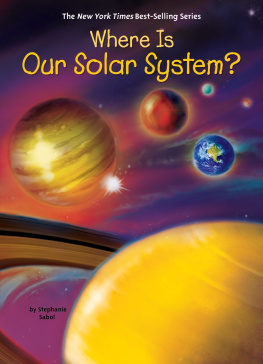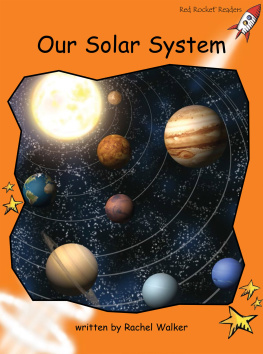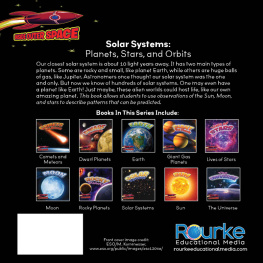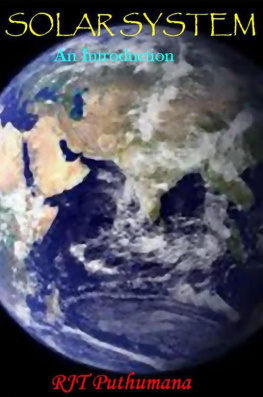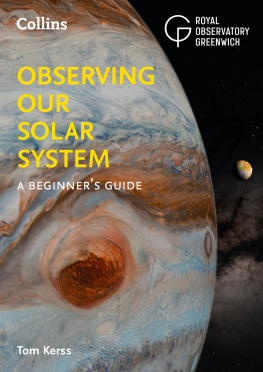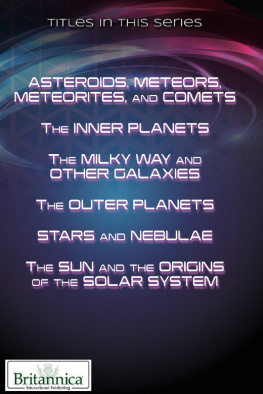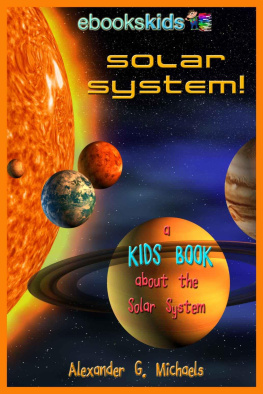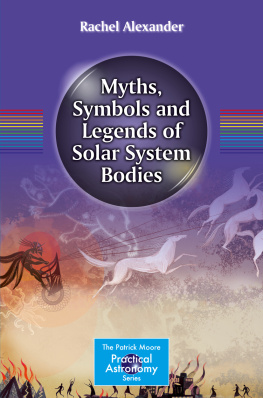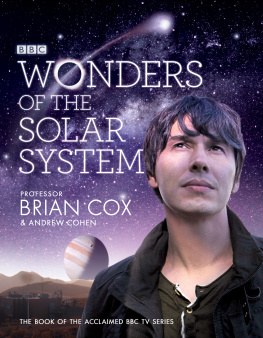HOW TO READ THE SOLAR SYSTEM
A GUIDE TO THE STARS AND PLANETS
CHRIS NORTH AND PAUL ABEL

for Patrick
Contents
It goes without saying that any book associated to The Sky at Night owes a huge debt of gratitude to Patrick Moore, who presented the show from its first airing in April 1957 until his death, at the age of 89, in December 2012. His personality, charisma and amazing ability to explain the most complex ideas in quick and easy to understand way has resulted in an amazing legacy of more than 55 years, and over 700 programmes. Patrick frequently insisted that The Sky at Night was always about more than just him, and while he is sorely missed, the series has continued.
Without the continuation of The Sky at Night this book would simply not have happened. A common question has been who would fill Patricks shoes, and the honest answer is that no single person can and the presenting team numbers six: Chris Lintott, Lucie Green, Pete Lawrence, Jon Culshaw and the two of us. Added to that, of course, are the guests we feature every month, from professional astronomers to amateur astronomical societies; the contributions of their time, expertise and back catalogue of amazing images help make the programme a success. Coordinating the whole show are Jane Fletcher, our series producer, and Bill Lyons, the executive producer. We are grateful to both Jane and Bill, without whom the series would have almost certainly ended with Patrick, and who have both leant their support to this book. Jane and Bill are supported by a small but efficient production team based at BBC Bristol, in particular Alison Suker, Stella Stylianos and Keaton Stone. In the edit suite, Glenn Lewis, Dilesh Korya and Steve Williams have made the programme look and sound smooth and polished every month. The fact that this is possible in the space of a few days is testament to the skill and hard work of the film crew, particularly Andy Davis, Rob Lacey, Rob Hawthorne, Martin Huntley, Mark Payne-Gill.
We would also like to add a word of thanks to Richard Baum who was of great assistance for some of the historical sources in this book. And finally, it is important to say that such efforts wouldnt be possible without the support of our friends, family, and colleagues, who have understood when weve had to spend significant amounts of time researching and writing parts of this book. We are immensely grateful to Gabi, Clara and Matthew.
Chris North
Paul Abel
Autumn 2013
How To Read the Solar System is a book that would have warmed Sir Patrick Moores heart for many reasons. It has a simple aim to provide, for those just beginning in astronomy, a guide to the awesome motley collection of objects that make up the family of our own star the yellow ball of incandescence which we call the Sun.
To call this assortment of rocks a family is not quite as far-fetched as it may seem, for although they come in an array of vastly differing shapes and sizes, these lumps of matter all share a common history the history of the solar system, and many of their births are related. The more we discover about these planets, moons, comets and meteors, the more surprises they reveal. Yet, on a cosmic scale, we are looking here at the tiniest portion of the known Universe an almost infinitesimally small fraction of the vast expanse of space that we see looking up on a clear night, if we are lucky enough to be able to escape the all-pervasive light pollution of the modern world.
What we see in the heavens, even with the naked eye, is a myriad of stars each one a Sun in its own right, and recent research indicates that most of them probably have families of planets of their own. This appears to be the norm, rather than the exception, so there are probably even more planets than there are stars out there.
With binoculars or a small telescope, more wonders are revealed. We are able to glimpse, from within, the structure of our own Milky Way galaxy, a kind of greater family into which all the stars in our skies fit. We can look at the brightest parts of the Milky Way and see the massive dense centre of our galaxy, and look in the opposite direction out into the outer reaches of its spiral arms. And looking further out from our galaxy we are even able to see other galaxies of similar size, each containing billions of stars of their own. The most powerful telescopes now available have peered into unimaginably distant space, and, because of the finite speed of their light coming towards us, seen billions of years back in time. What they have shown us is billions upon billions of galaxies stretching out to the limits of the observable Universe.

Sir Patrick Alfred Caldwell Moore (1923-2012).
This is a very big picture, and the study of it, on this enormous scale, is called cosmology. Yet, this book has no truck with cosmology. Its impossible to see any of this vastness at close quarters, but many of us, including Sir Patrick Moore, have found great thrills in examining what is on our own doorstep, relatively speaking. Looking up at the skies of our own Solar System, we soon become aware of those wanderers which move their position on the starry vault every night the planets which have been known to our ancestors since before recorded history: Mercury, Venus, Mars, Jupiter, Saturn. And we may be lucky enough to see a visiting comet or a minute piece of rock flash its burning path through our atmosphere as it burns up the shooting stars which also fascinated our forbears.
It is this close-up drama that is the subject of this book. It is a modest aim, to survey only material within a couple of light years of our Sun, but in this study, we will see in miniature the whole of the Universe, since it seems that no matter where we go in the Universe things look very much the same. So a careful study of our immediate surroundings can tell us so much about the wider cosmos. Indeed, Sir Patrick Moore, though well versed in every aspect of current knowledge in astronomy and astrophysics, devoted a large fraction of his entire life to detailed observations of the planets, and in particular, our own Moon, a mere quarter of a million miles from Earth. His meticulous lunar mapping was so extraordinarily accurate that is was used by the first US astronauts, to plan their conquest of the Moon.
Sir Patrick was not the only astronomer to become absorbed in the uncovering the secrets of our Solar System, but our knowledge of this subject has exploded in the last 20 years, as a succession of unmanned probes have been launched on missions to rendezvous with the planets, their moons, and even with cometary nuclei and asteroids. The photographs and data these probes have sent back to Earth have brought us shockingly clear information about all these objects, and it is fair to say that the truth about the composition of all these objects was a surprise in every case.
Does that uniformity we see in the Universe include life? Are those other planets inhabited too, with the wonderful array of creatures which Man has done such a good job of bringing to the brink of extinction? We may never know. But looking at those rocks and stones, and the very dust that surrounds us on our tiny blue planet is a very good place to start. Certainly for this Sir Patrick, to whom this admirable book is dedicated, and who is the reason so many of us have discovered the thrills of astronomy, would be smiling.
Dr Brian May

